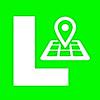最近、趣味でNeo4jを触ってて、Swift実装でソーシャルグラフのようなView表現を試してみた。
実装のイメージ

※ 何故かXcodeの動画キャプチャがエラー吐きまくりでカクカクになってしまった...
まあ、こんなもんかな。strokeした線は消して再描画するみたい pic.twitter.com/v8NgpgD6I6
— Fumiya Ichikawa (@LET__IT__RIDE) February 12, 2020
ドラッグ可能なViewの実装
Viewは拡張クラス及び、ドラッグ時のdelegateを定義するようにした。
何故、delegateで移譲したかというとtouch.location(in:view)でタップ場所を取得する時、引数のviewで指定したoriginを起点にした座標軸になってしまう。親viewの座標を元にViewを移動配置したいので親View側で実装した方が効率が良い。
また後述する線の描画は親view側のlayerに配置するので、親view側でドラッグのイベントを定義できたほうが色々と都合が良い。
protocol MViewDelegate{ func move(_ touches: Set<UITouch>, with event: UIEvent?) } class MView: UIView { var delegate:MViewDelegate? override init(frame: CGRect) { super.init(frame: frame) self.layer.borderColor = UIColor.red.cgColor self.layer.borderWidth = 5 self.layer.backgroundColor = UIColor.white.cgColor self.layer.cornerRadius = 50 } required init?(coder aDecoder: NSCoder) { super.init(coder: aDecoder) } override func touchesMoved(_ touches: Set<UITouch>, with event: UIEvent?) { self.delegate?.move( touches, with: event) } }
Viewの配置
配置はこんな感じ。
class ViewController: UIViewController { let view1 = MView(frame: CGRect(x: 50, y: 50, width: 100, height: 100)) let view2 = MView(frame: CGRect(x: 200, y: 200, width: 100, height: 100)) override func viewDidLoad() { super.viewDidLoad() view1.delegate = self view2.delegate = self self.view.addSubview(view1) self.view.addSubview(view2) } } extension ViewController:MViewDelegate{ func move(_ touches: Set<UITouch>, with event: UIEvent?) { guard let touch = touches.first, let view = touch.view else { return } let location = touch.location(in: self.view) view.center = location } }
let location = touch.location(in: self.view) view.center = location
この部分でドラッグしているviewのcenterを親view(この場合はViewControllerのsefl.view)上でタップされている位置に動かしている。
View間に線を描画する
線はfromView.centerとtoView.centerをつなぐような線をstrokeすればよい。
shapeLayerをaddSublayerした後、各viewをaddSubViewすることでviewが線の前面にくる。
class ViewController: UIViewController { let view1 = MView(frame: CGRect(x: 50, y: 50, width: 100, height: 100)) let view2 = MView(frame: CGRect(x: 200, y: 200, width: 100, height: 100)) let line1 = UIBezierPath() let shapeLayer = CAShapeLayer() override func viewDidLoad() { super.viewDidLoad() view1.delegate = self view2.delegate = self self.strokeLine() view.layer.addSublayer(shapeLayer) self.view.addSubview(view1) self.view.addSubview(view2) } private func strokeLine(){ self.line1.move(to: view1.center) self.line1.addLine(to: view2.center) self.line1.stroke() self.shapeLayer.strokeColor = UIColor.blue.cgColor self.shapeLayer.path = self.line1.cgPath } }
Viewの移動によって線を伸縮する
この実装方法を1時間くらい彷徨った(笑)
Swiftで一度strokeした線をドラッグに応じて伸縮させる手法ないかな。調べても良さそうな方法が出てこない
— Fumiya Ichikawa (@LET__IT__RIDE) February 12, 2020
一度drawした線自体を変更することはできないようなので、ここを参考にviewドラッグ時にremoveして再描画するような手法で実装した。
参考にしたページhttps://t.co/as2grfM5tp
— Fumiya Ichikawa (@LET__IT__RIDE) February 12, 2020
class ViewController: UIViewController { let view1 = MView(frame: CGRect(x: 50, y: 50, width: 100, height: 100)) let view2 = MView(frame: CGRect(x: 200, y: 200, width: 100, height: 100)) let line1 = UIBezierPath() let shapeLayer = CAShapeLayer() //...略 } extension ViewController:MViewDelegate{ func move(_ touches: Set<UITouch>, with event: UIEvent?) { guard let touch = touches.first, let view = touch.view else { return } let location = touch.location(in: self.view) view.center = location self.line1.removeAllPoints() self.strokeLine() } }

